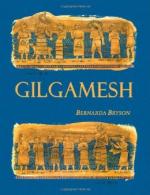|
This section contains 830 words (approx. 3 pages at 400 words per page) |

|
Point of View
The point of view of Gilgamesh is third person omniscient - the voice of one accustomed to telling tales of monsters and heroes before a gathered audience. The story is told in the past tense, as myths generally are, until the point at which Gilgamesh meets his ancestor Utnapishtin, when it abruptly switches to the present. This tense is maintained throughout the early part of Gilgamesh's association with Utnapishtin, though the ancestor's tale of the destruction of Shuruppak changes again to the past tense, which continues through Utnapishtin's explanation of the Magic Weed to the conclusion of the story.
The fluidity of time in Gilgamesh reflects Gilgamesh's desire to eradicate, or at least blur, the line between mortality and immortality. With the departure into Utnapishtin's story, the typical constraints no longer apply. Utnapishtin is spoken of, by the third person narrator, in the present tense -...
|
This section contains 830 words (approx. 3 pages at 400 words per page) |

|




